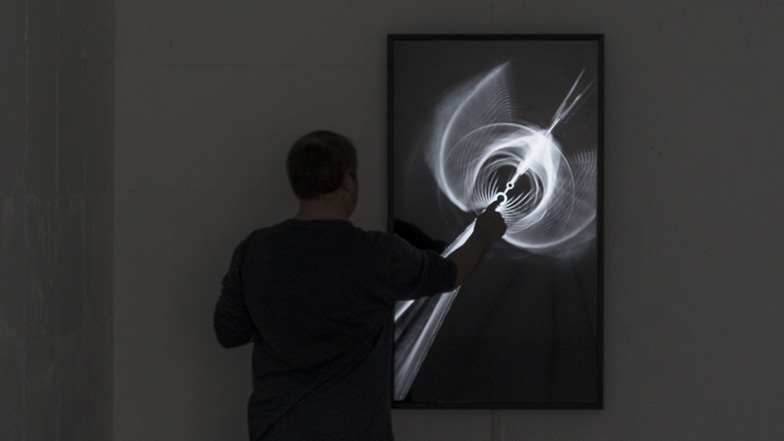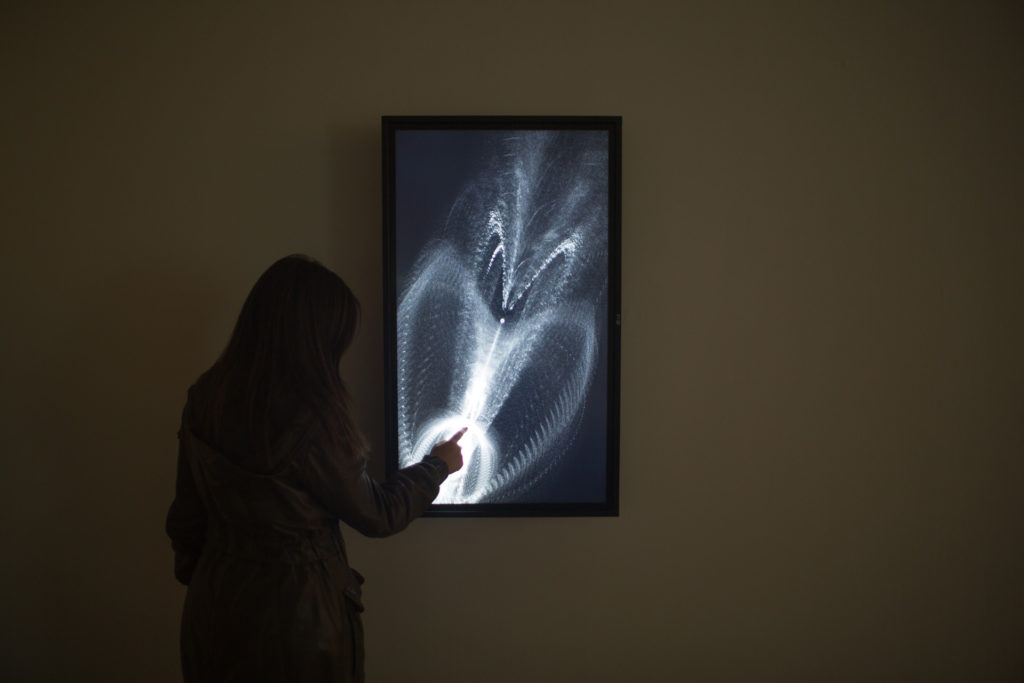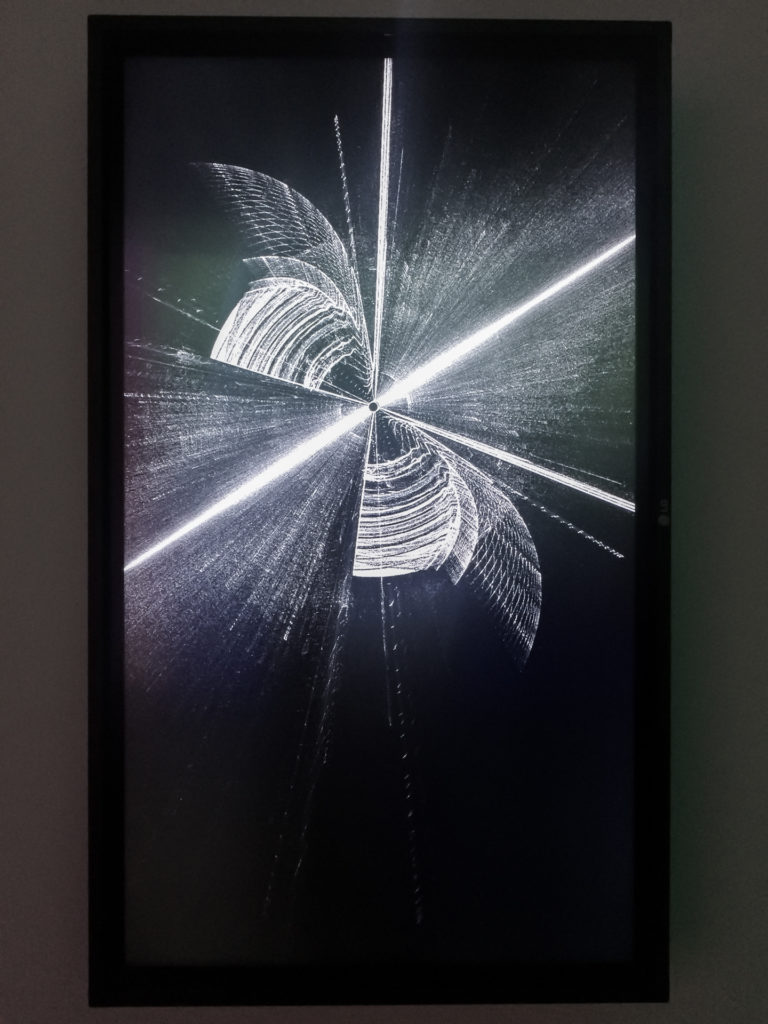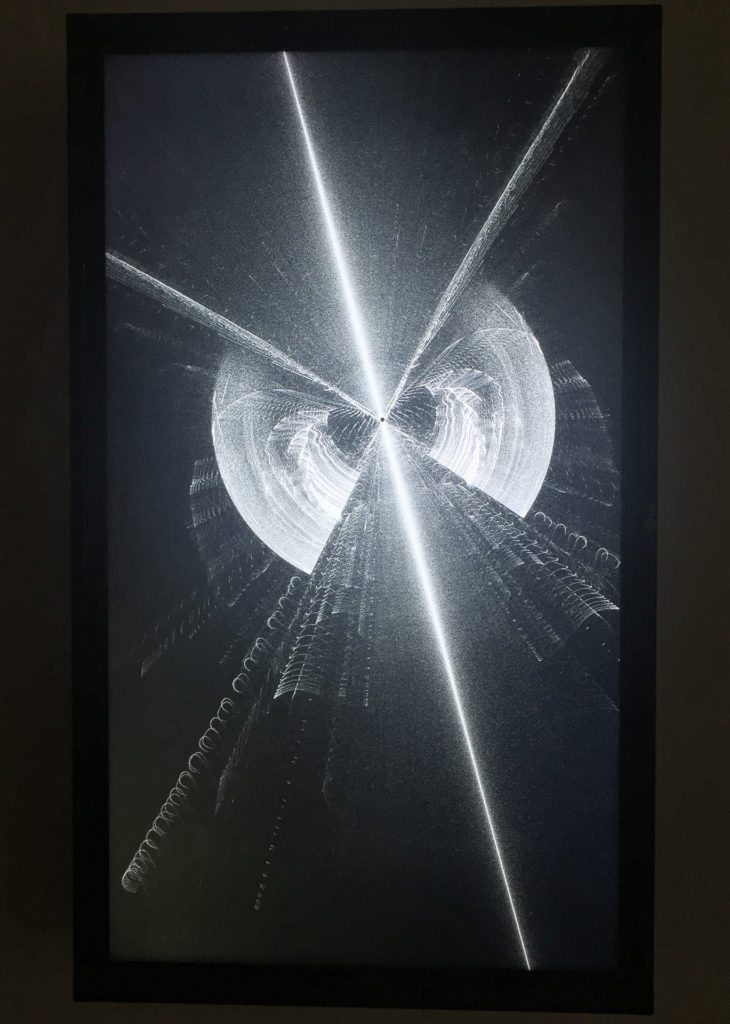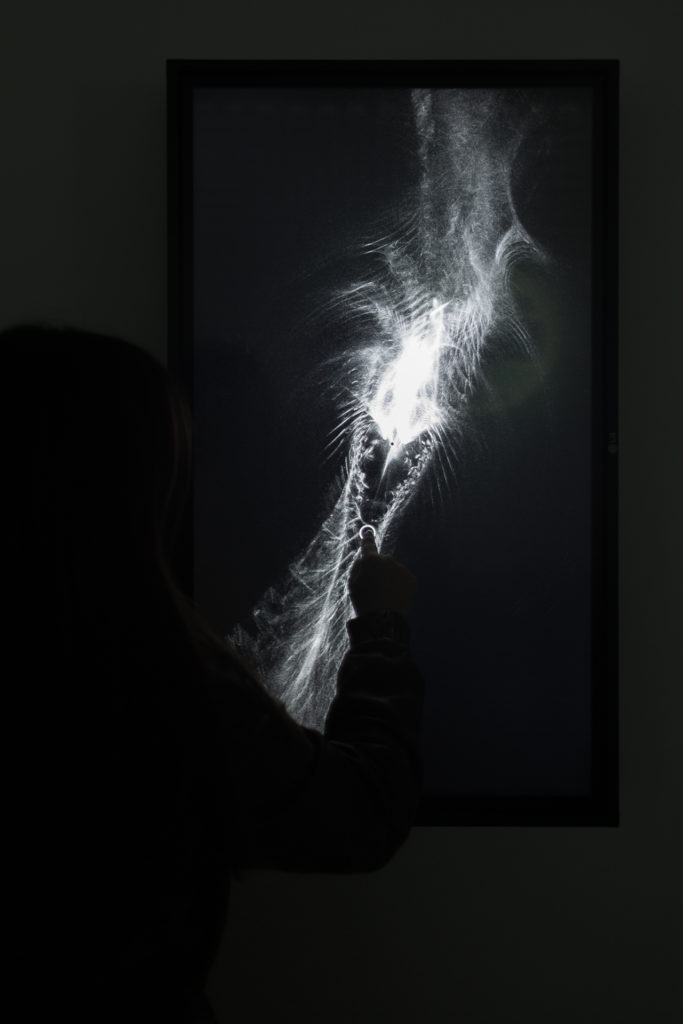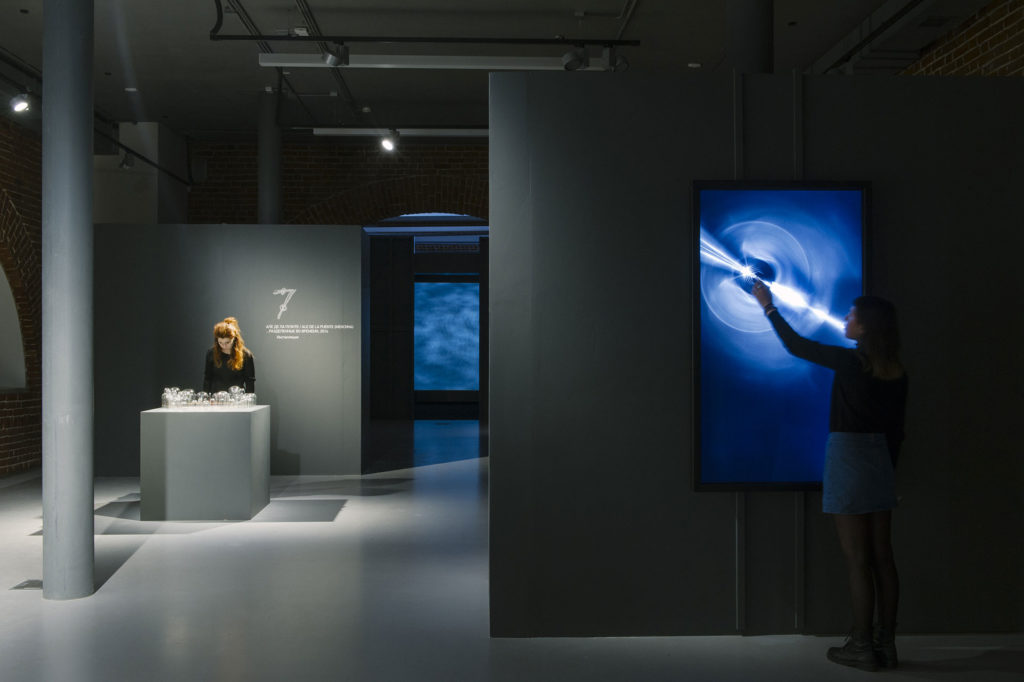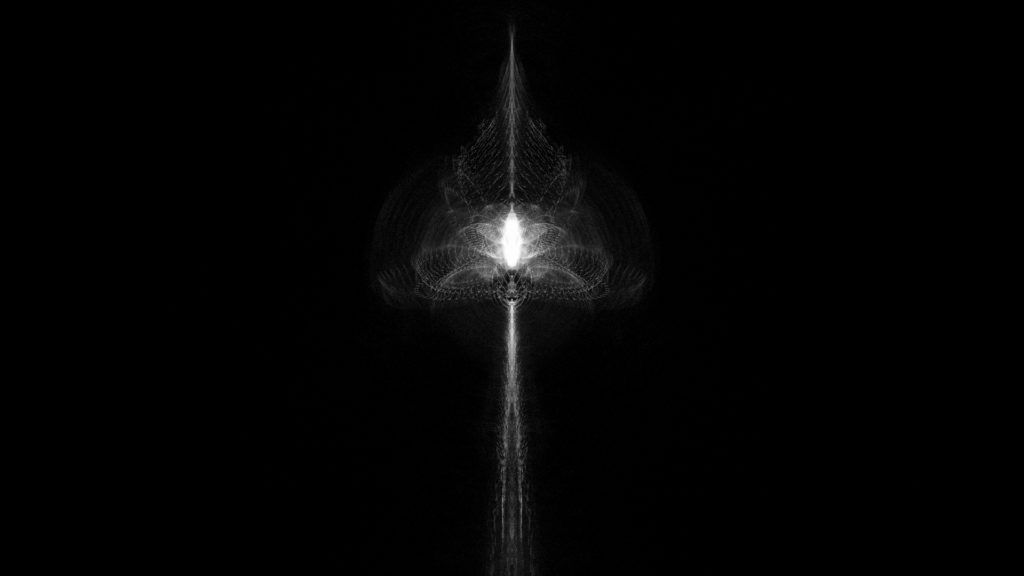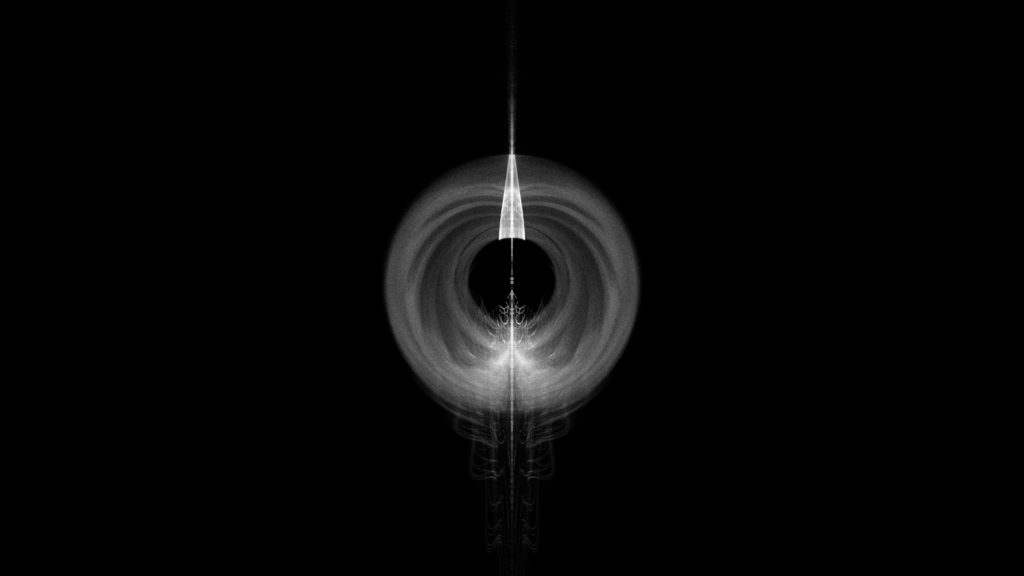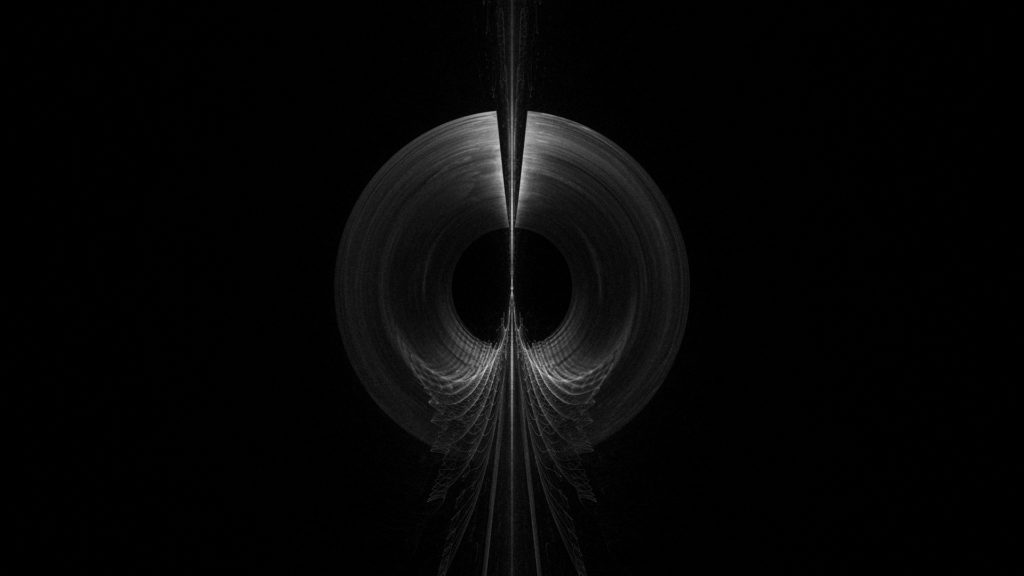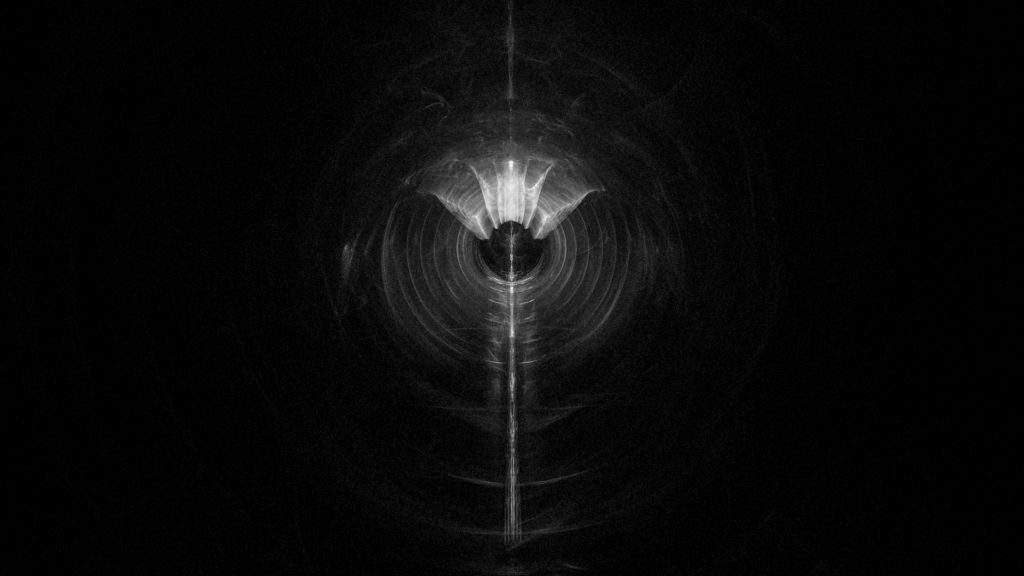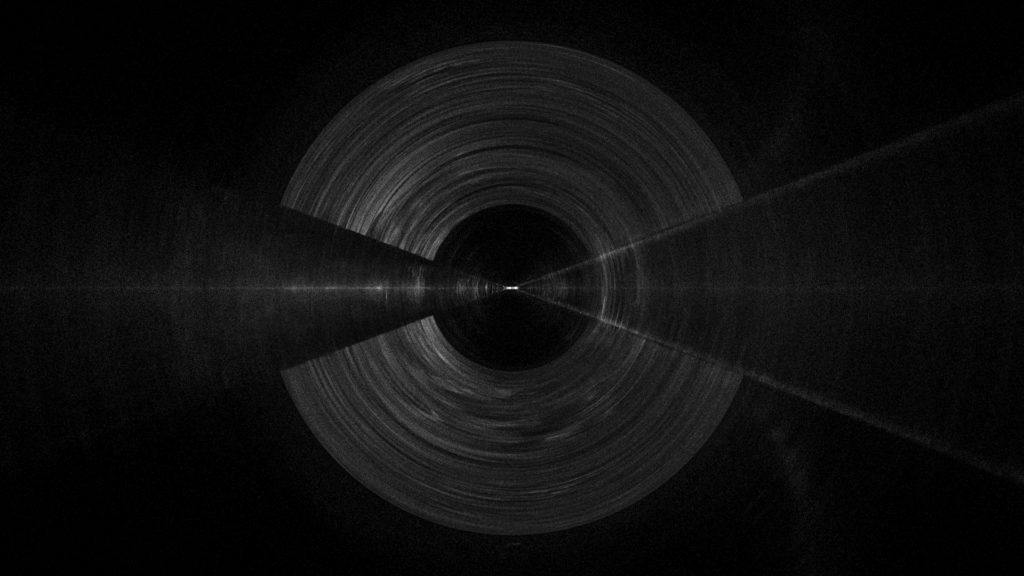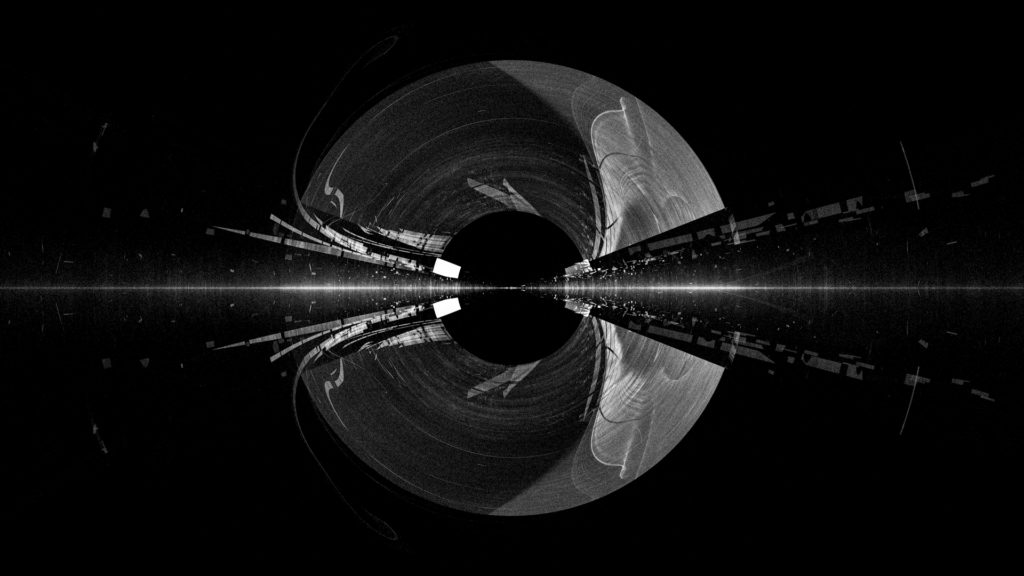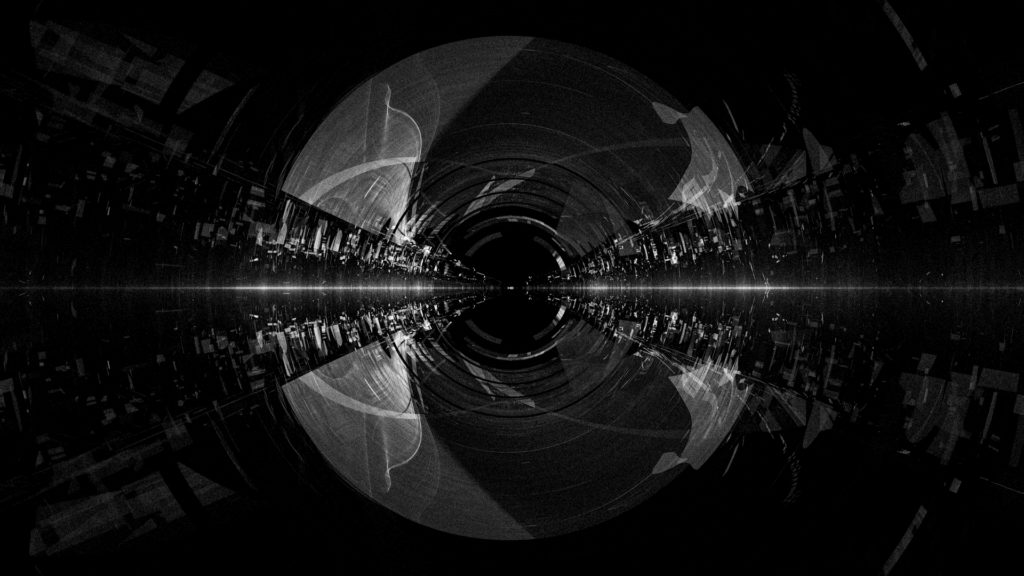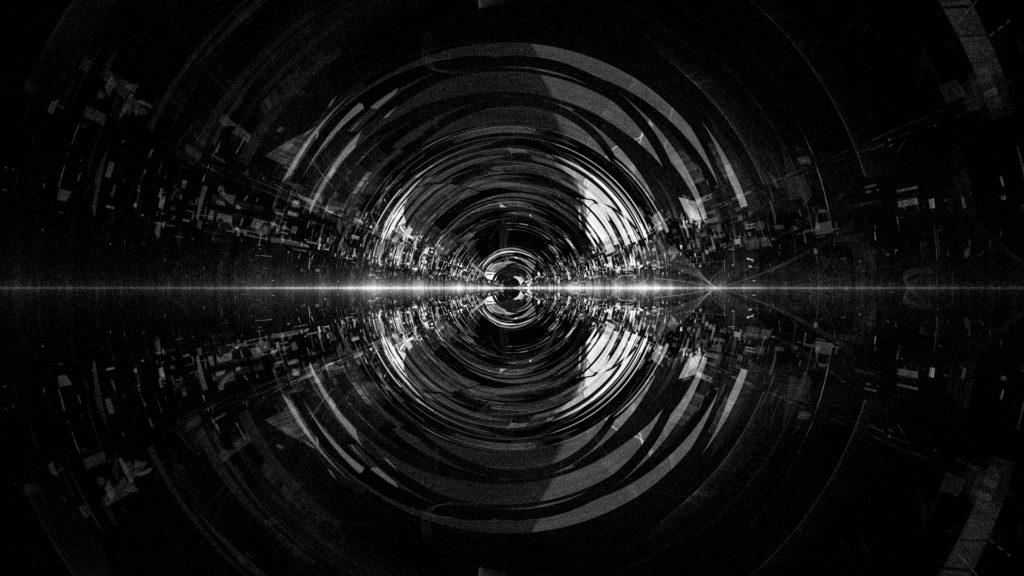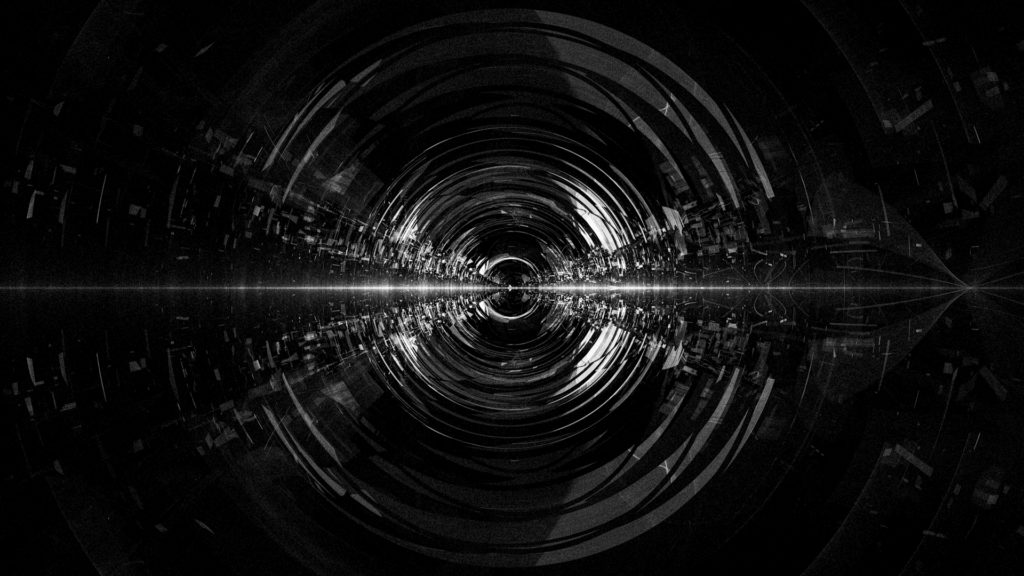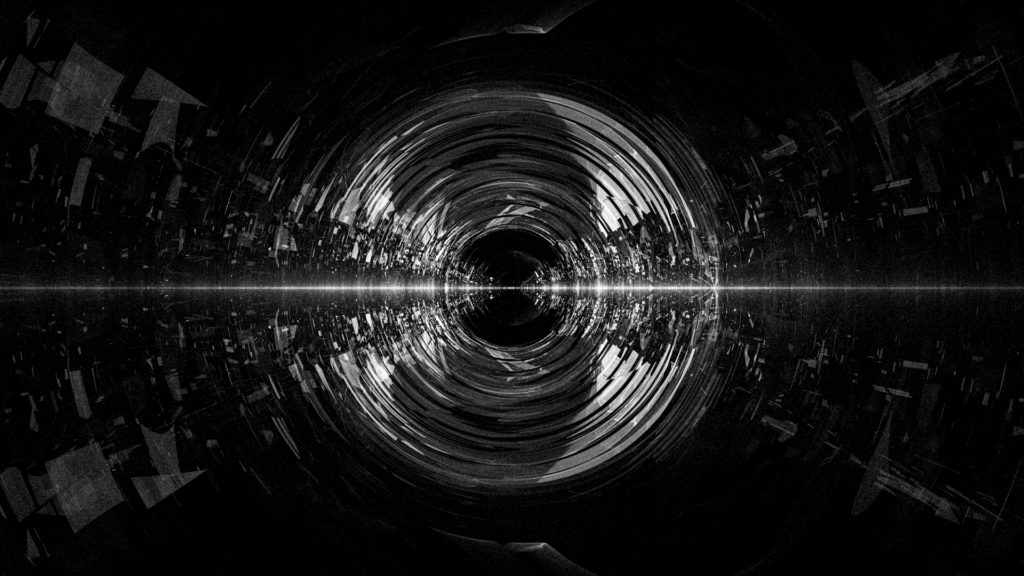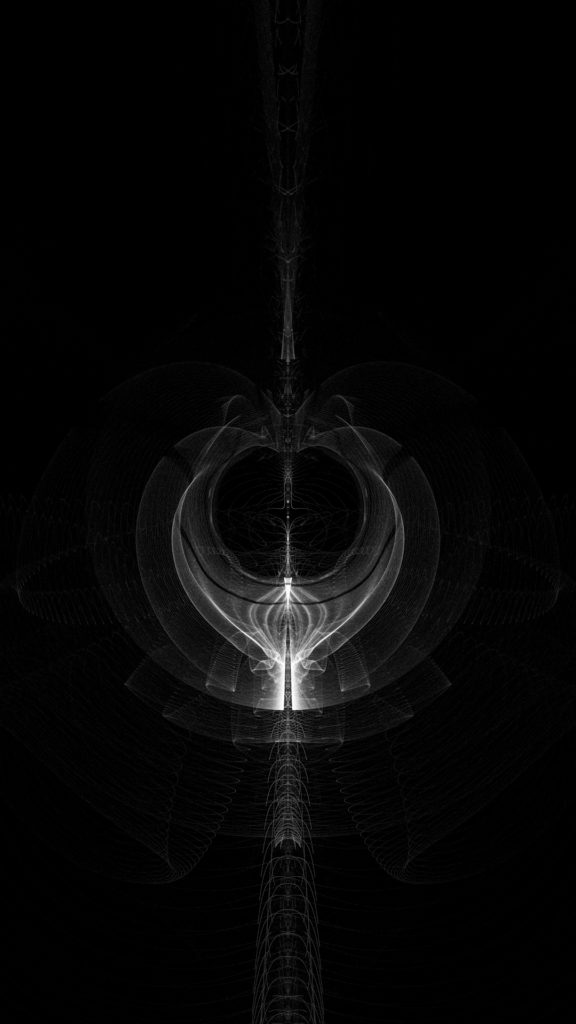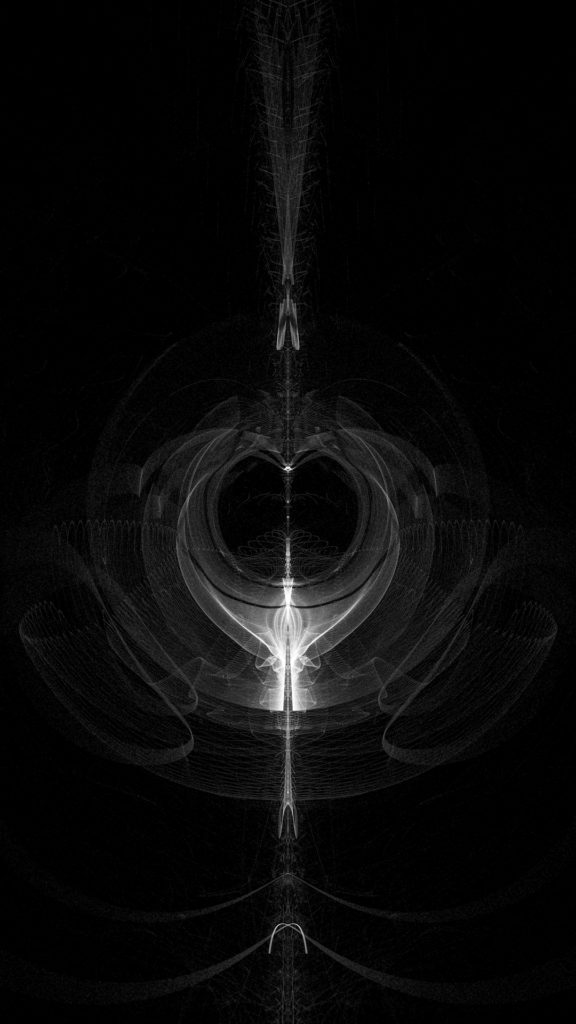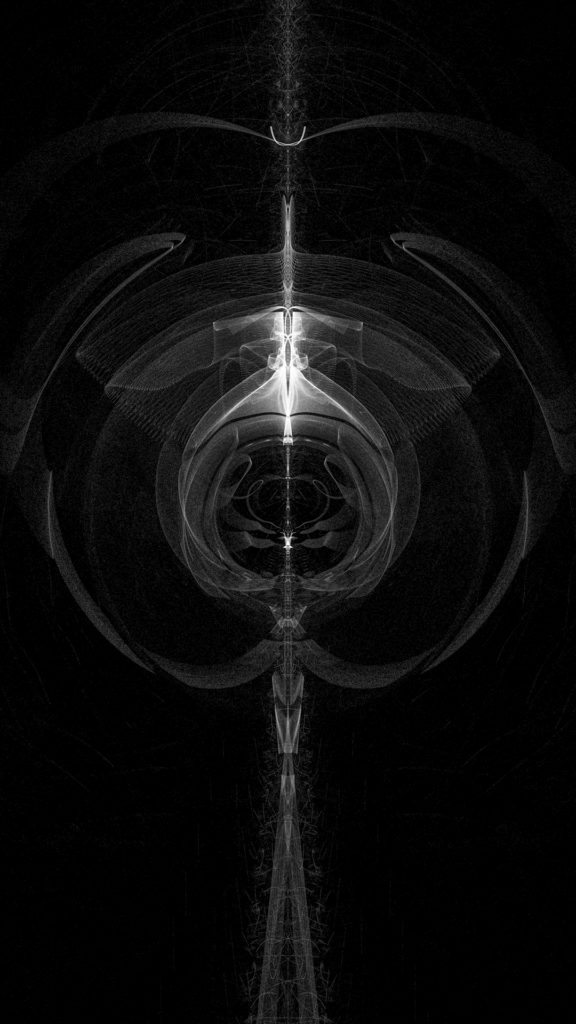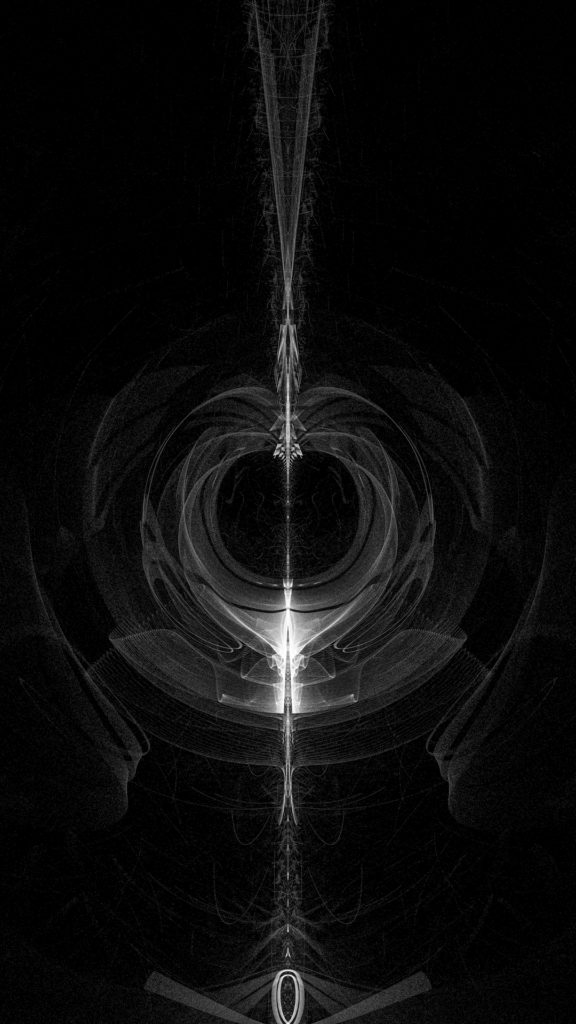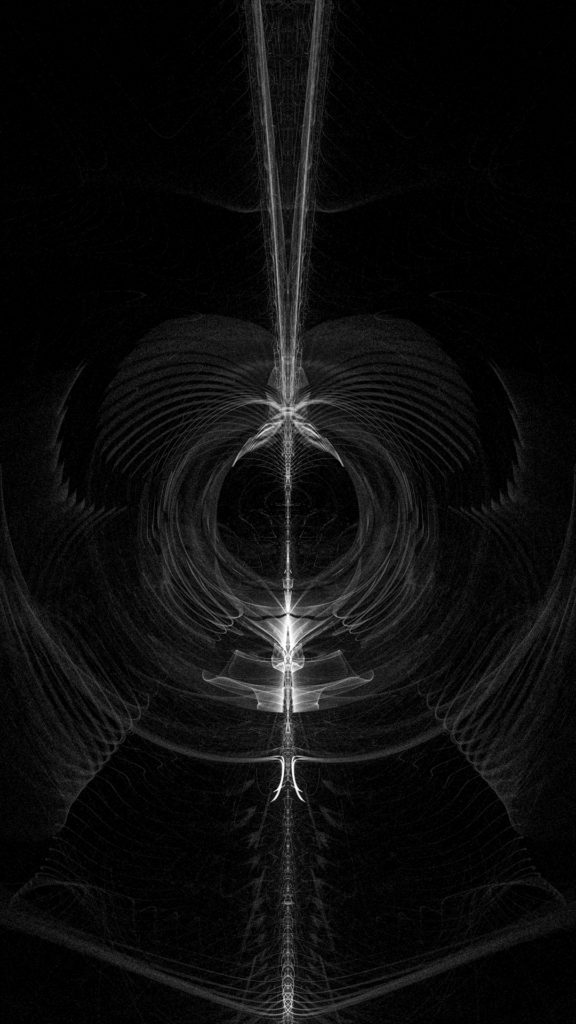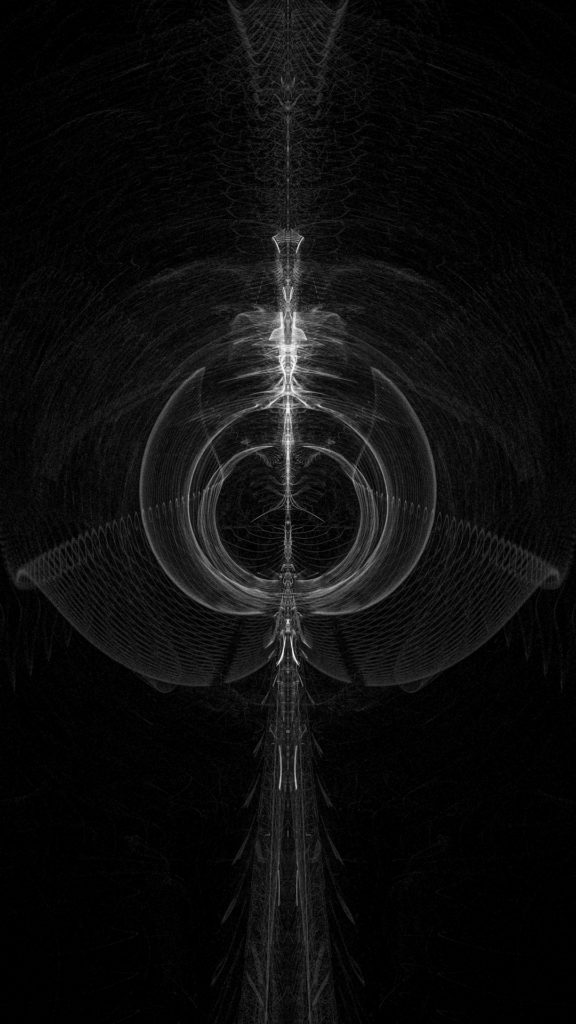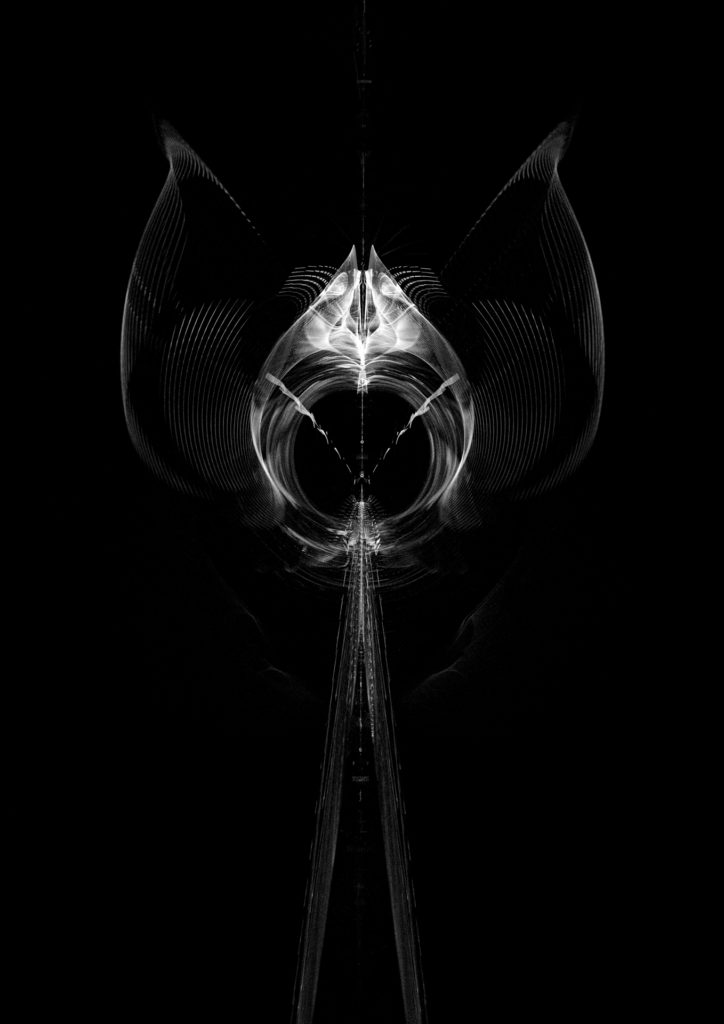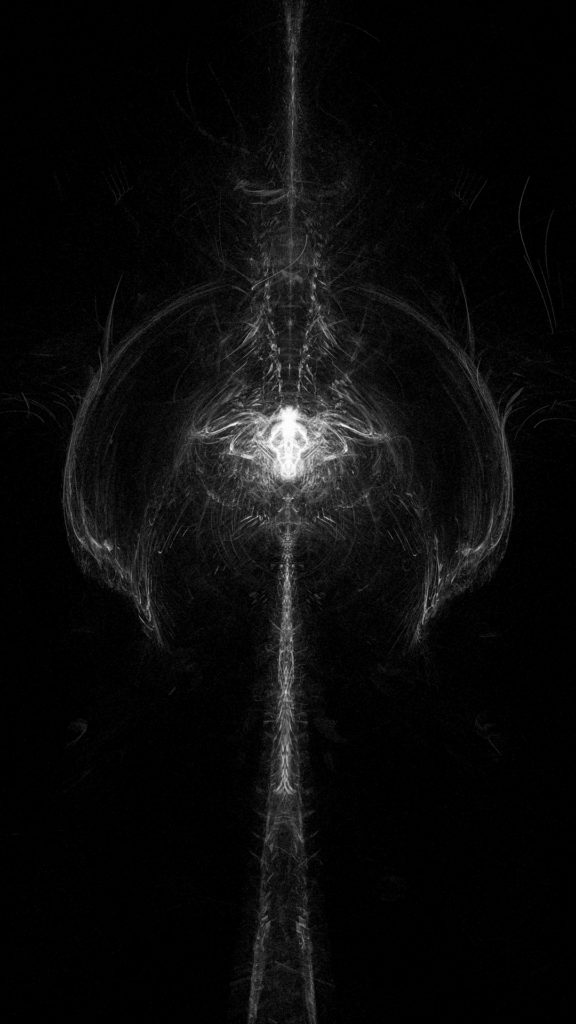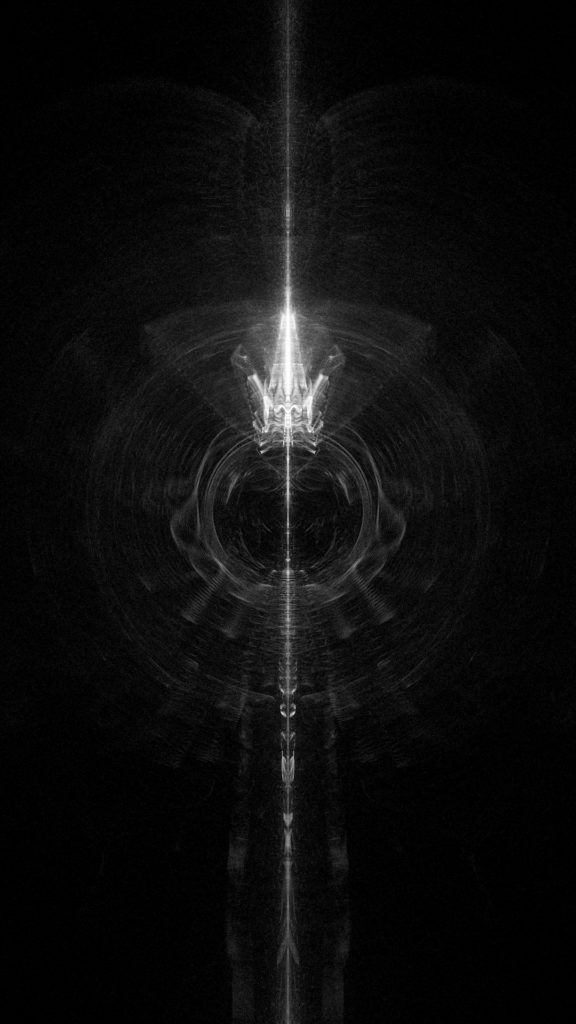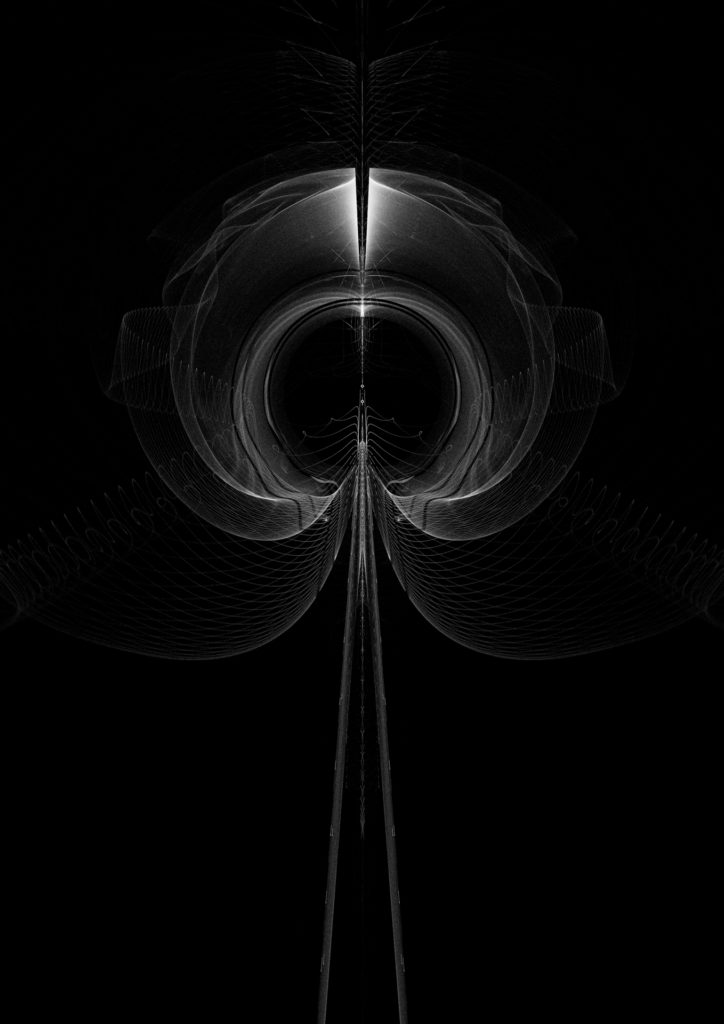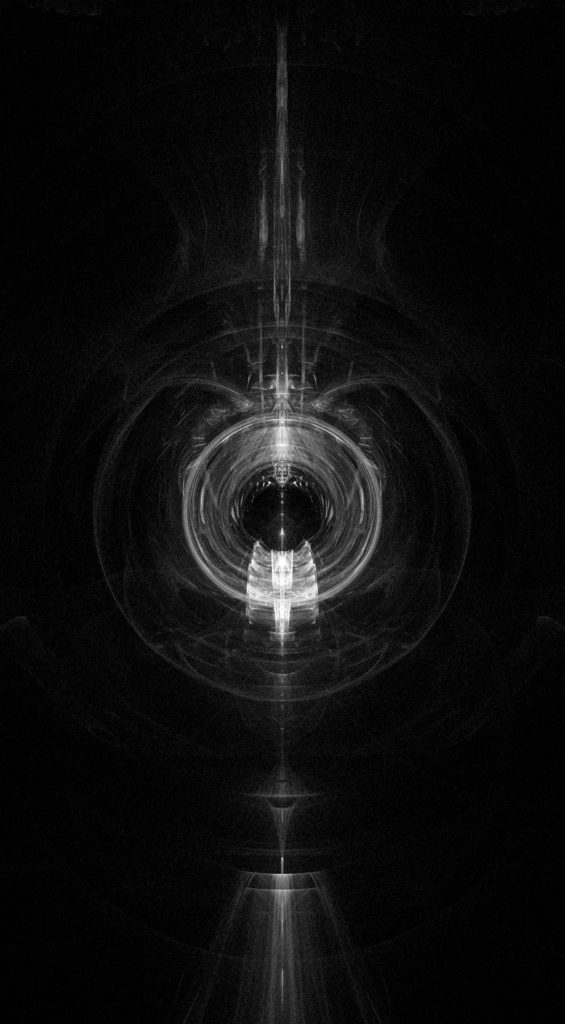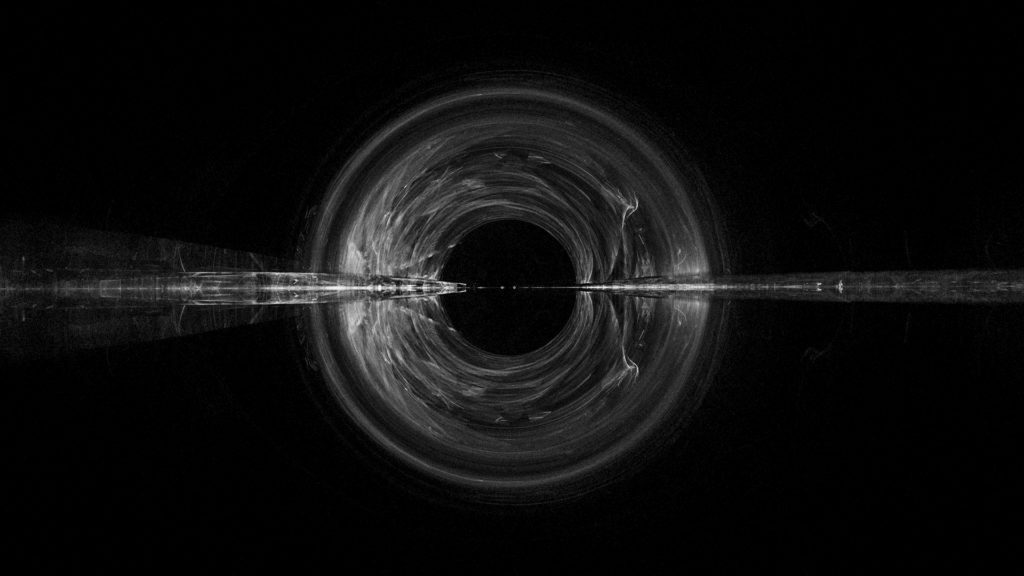Interactive touch-screen video installation
1ch HD/4K touch-screen LCD, custom software
Duration: N/A
Dimensions: 50″+ touch-screen.
‘Equilibrium’ (2014) is a touch-screen video installation, an interactive abstraction, a data dramatization, of the delicate balance in which an ecosystem hangs – an extremely fragile structure susceptible to the slightest external perturbations; but simultaneously also very resilient in its ability to settle into new – but very different – configurations.
At times it may appear that the images in the video are static, with no movement, or with very slow and gradual pulsations at a macroscopic scale. But upon closer inspection, an enormous amount of activity becomes apparent. Each and every pixel is an individual dynamic object, millions of them, moving around furiously. But overall the system is in balance, it’s temporarily stable, in homeostasis. Until there is an external disturbance, until you touch it, and introduce forces to disrupt this balance. A small disturbance may cause the system to oscillate briefly, but eventually settle on a configuration very close to the starting point. However, larger disturbances may cause everything to fall apart, and the system starts oscillating out of control. Eventually, if left untouched, it will find a new equilibrium, but in a very different configuration, which may not include any of the elements from before.
I discuss more in depth the backstory and journey that led to this work in this talk.
The project was inspired during an expedition to Madagascar with the Unknown Fields Division following the trail of global resource extraction into the heart of one of the most unique ecosystems on the planet, exploring the endangered rainforests, mining landscapes and wild west sapphire towns. The country is a popular hotspot for tourists and wildlife lovers, rich in biodiversity with many endemic species and a unique ecology. It’s rich in resources desired by the affluent world such as rosewood, gold, sapphire, nickel and cobalt; and exploited by lawless industries. While the country’s residents live in extreme poverty – with a tradition of unsustainable slash-and-burn subsistence farming – corrupt battles ensue for political power. The landscape rich with these different types of resources – ecological, financial, social, political or simply subsistence – is ripped apart from all directions, based on the shifting balance of these values.
Of course these behavioural concepts apply to many complex systems beyond the landscape of Madagascar: populations and ecosystems on various scales, climate, politics, social and economic trends, and many other biological and physical systems.
And even our own brain is a non-linear dynamical system, with around 100 billion neurons, each with thousands of synapses connecting to other neurons. Billions of neurons fire every second, triggering other neurons to fire which in turn trigger other neurons to fire, creating huge networks of feedback loops. Yet somehow – most of the time – this complex system doesn’t go out of control. It’s in some kind of balance. Except it’s not, because there are constantly signals coming in from outside, whether it’s outside the body altogether, or from within the body. A major area of study in neuroscience, is to not just look at how individual neurons operate, but to look at how large groups, or populations of neurons operate, to look at higher order emergent behaviours, like patterns of ripples, or waves of activations.
In fact it’s postulated, that perhaps what our own biological neural networks are constantly trying to do, is to continually try to find these stable points of equilibrium, as they receive these external signals which disturb their internal balance. Some even claim, that the very act of learning, of perception, of cognition, is the convergence of irregular neural activity, into a stable one. And thus the brain is continually trying to reach a point where it is able to predict what is going to happen next, so that the incoming signals can match the predictions, with minimal disruption.

